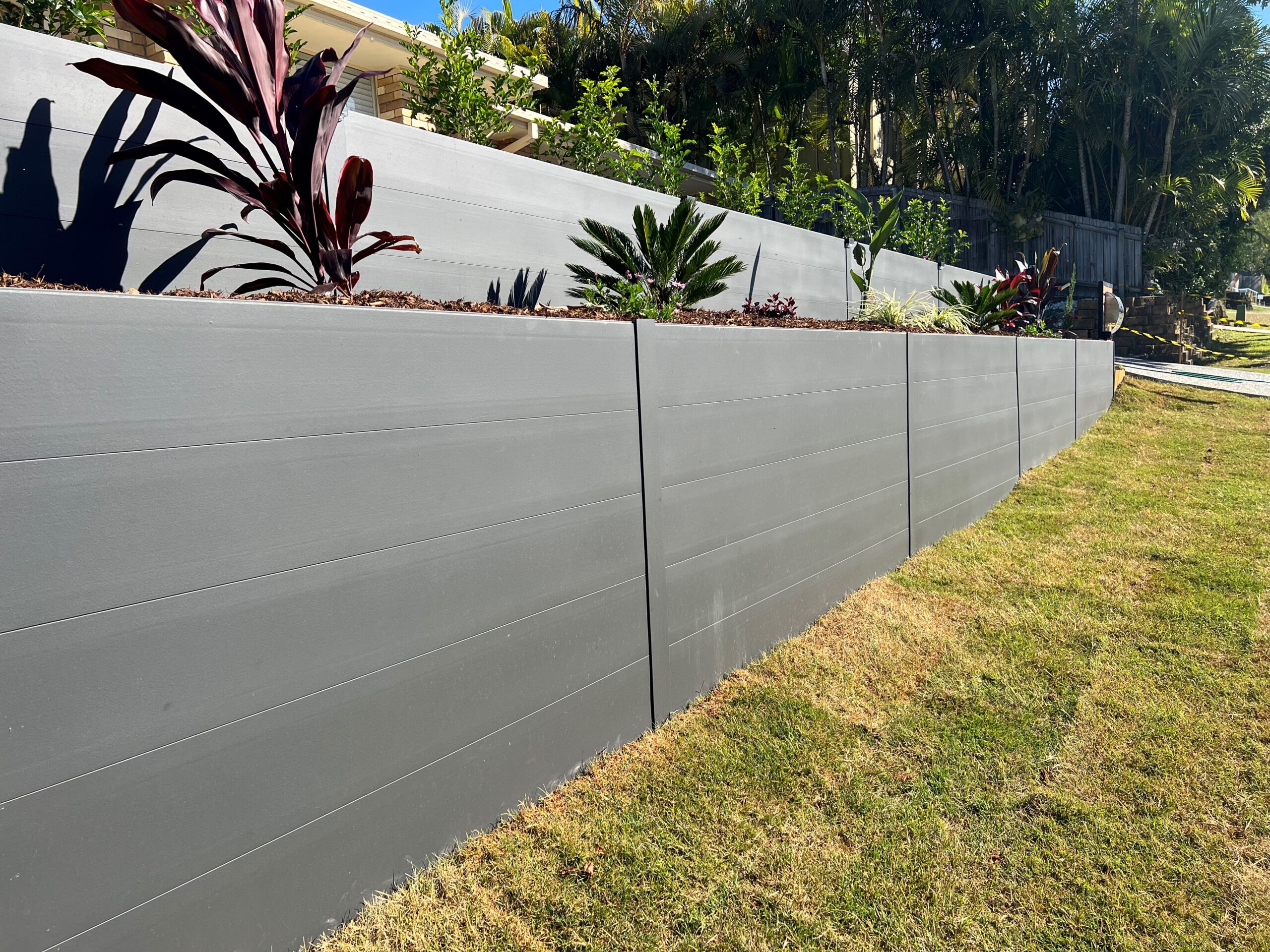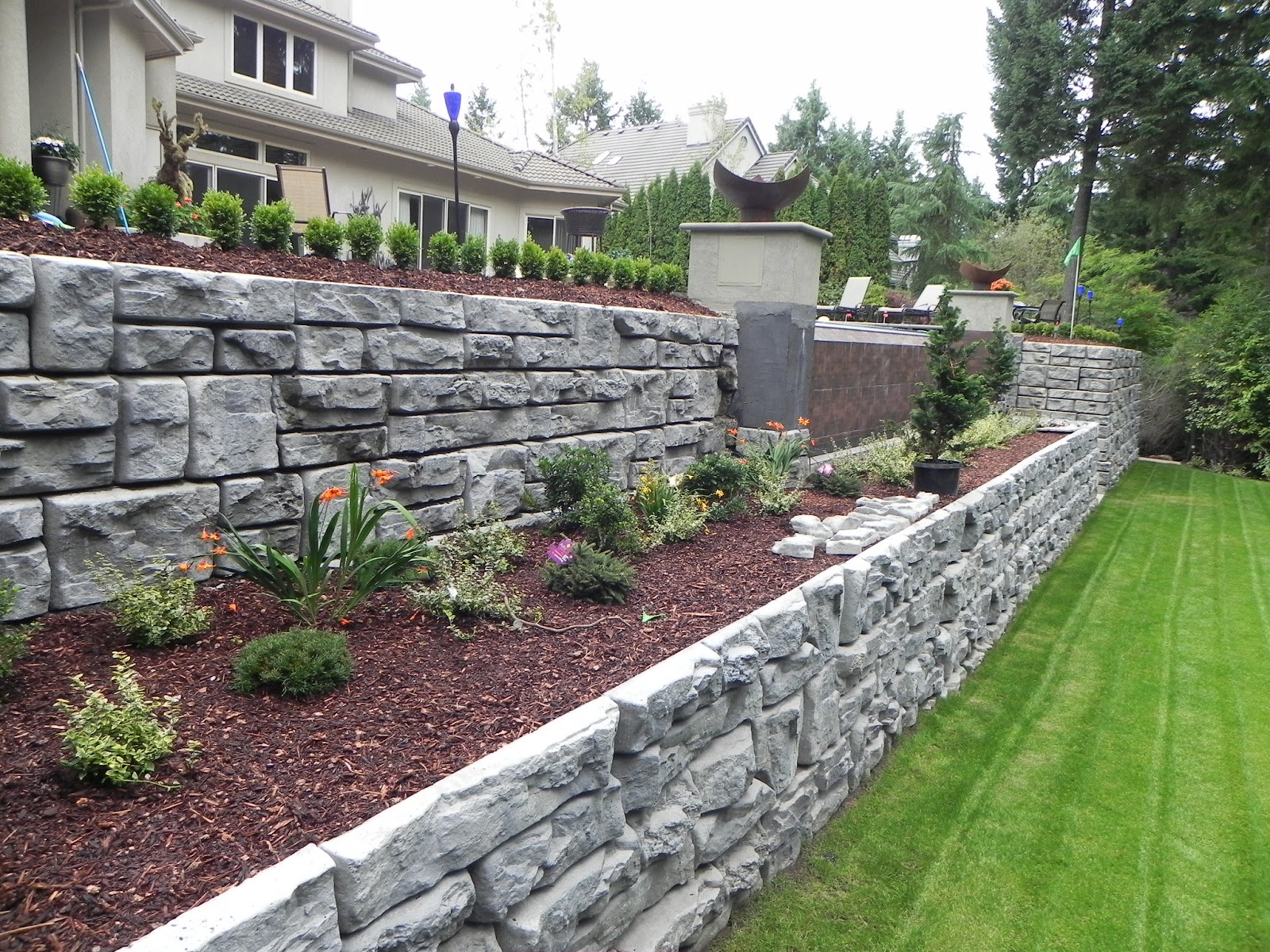Ensuring Structural Stability: The Significance of Appropriately Built Preserving Wall Surfaces in Protecting Against Incline Failing
In the realm of civil engineering and building and construction, the value of appropriately built keeping walls in avoiding slope failing can not be understated. By discovering the complex interplay in between these components, a much deeper comprehension of the pivotal role that preserving wall surfaces play in preserving structural honesty and avoiding incline failure arises.
Role of Retaining Walls in Security
The indispensability of maintaining walls in ensuring incline stability is critical in civil design techniques. Keeping walls serve a critical role in preventing soil disintegration, managing water overflow, and keeping the structural integrity of inclines. By sustaining vertical or near-vertical quality adjustments, keeping wall surfaces aid to redistribute lateral pressure applied by the dirt, thereby lowering the risk of slope failing.
One trick feature of retaining walls is to combat the pressure of gravity acting upon the soil mass behind them. This is achieved with appropriate layout and building and construction, which considers aspects such as dirt kind, wall surface elevation, water drainage provisions, and prospective additional charge lots. By effectively keeping soil within specified limits, these frameworks aid to stabilize slopes and avoid landslides.
Moreover, maintaining wall surfaces add to the looks of landscapes while giving functional advantages. They can develop terraced degrees for landscape design, assistance roads or frameworks on hills, and boost the general functionality of sloped surface. Fundamentally, maintaining wall surfaces play a crucial duty in keeping incline security and making certain the safety and durability of civil engineering tasks.
Variables Affecting Wall Surface Efficiency
Elements that influence the effectiveness of retaining wall surfaces consist of soil buildings, wall surface design, and exterior loads. Dirt residential properties play an important role in establishing the stability and performance of a retaining wall surface. Aspects such as soil kind, cohesion, inner rubbing angle, and groundwater conditions can influence exactly how well a wall preserves the soil behind it. The layout of the maintaining wall is an additional essential factor that affects its effectiveness. Correct wall layout thinks about factors like wall surface height, wall surface kind (e.g., gravity wall surfaces, cantilever wall surfaces), reinforcement products, drain systems, and construction methods to guarantee the wall surface can hold up against the side pressure exerted by the kept dirt. Furthermore, outside lots, such as additional charge tons from nearby frameworks or web traffic, seismic pressures, and water pressure, need to be carefully examined during the design and building and construction phases to make sure the wall surface can effectively resist these outside pressures. By considering these aspects adequately, engineers can build preserving wall surfaces that efficiently stop incline failing and ensure long-lasting architectural integrity.
Layout Factors To Consider for Maintaining Walls
Incorporating the crucial aspects of dirt properties and exterior tons into the structural layout process is important for developing reliable maintaining walls that ensure incline security. When developing retaining wall surfaces, engineers should thoroughly assess the qualities of the surrounding soil, including its kind, drain, and compaction buildings. Understanding these dirt homes is important for determining the ideal wall surface density, support, and height required to endure the side pressure put in by the dirt mass.
Furthermore, exterior lots such as surcharge lots from neighboring frameworks or traffic, along with seismic forces, have to be thought about throughout the style stage. These tons can substantially impact the stability and efficiency of a retaining wall, requiring using proper style methods and products to mitigate potential failure dangers.
In addition, the selection of suitable materials, such as concrete, stone, or lumber, need to align with the visual demands and site-specific problems. Variable of safety considerations, drainage provisions, and building methods are additionally vital aspects that influence the overall design and functionality of maintaining wall surfaces in avoiding slope failure. By thoroughly thinking about these style factors to consider, designers can make certain the architectural honesty and lasting security of preserving wall surfaces.

Building And Construction Best Practices for Durability
When constructing keeping walls for optimal sturdiness and durability, adherence to industry-standard methods and precise interest to detail are vital. To make certain the longevity of a preserving wall surface, appropriate site preparation is essential. This a knockout post includes adequate compaction of the dirt, correct drain systems, and making sure the wall's foundation is audio. Utilizing high-grade materials, such as concrete blocks or all-natural stone, is essential for the longevity of the framework. Furthermore, employing proficient professionals with experience in constructing keeping walls can substantially influence the toughness of the final item.
Incorporating reinforcement strategies, such as geogrids or steel bars, can enhance the structural stability of the preserving wall and protect against potential failures. Correct backfilling treatments, including compaction and drain factors to consider, are additionally important for the wall's longevity. Regular maintenance and evaluations are advised to resolve any indications of wear, disintegration, or structural issues immediately. By complying with these building and construction ideal practices, retaining walls can endure the test of time and successfully stop incline failing.
Relevance of Correct Upkeep
Routine upkeep is vital for maintaining the structural honesty and performance of preserving walls over time. To make certain that keeping wall surfaces continue to do their intended function properly, regular examinations ought to be performed to identify any kind of signs of wear and tear.

Verdict
In conclusion, maintaining wall surfaces play an important function in making sure architectural integrity and preventing slope failure. By taking into consideration factors influencing wall surface efficiency, adhering to create factors to consider, adhering to building and construction ideal techniques, and applying appropriate upkeep, the longevity of preserving wall surfaces can be made best use of. Retaining Walls Sunshine Coast. It is necessary to recognize the relevance of properly created preserving wall surfaces in keeping stability and avoiding potential threats connected with slope failure
Variables that affect the efficiency of retaining wall surfaces consist of soil residential or commercial properties, wall layout, and outside loads. Correct wall design considers variables like wall elevation, wall kind (e.g., gravity wall surfaces, cantilever walls), support materials, water drainage systems, and building techniques to make certain the wall surface can withstand the side pressure applied by the kept dirt. By thinking about these elements comprehensively, designers can construct maintaining walls that properly avoid slope failure and ensure lasting architectural integrity.
Maintenance tasks may include removing water drainage systems to stop water build-up behind the wall, fixing any kind of visible fractures or damage, and guaranteeing that the wall surface is free from plants that can exert stress on the framework. By considering aspects affecting wall efficiency, sticking to design considerations, adhering to construction finest methods, and implementing proper maintenance, the durability next page of keeping wall surfaces can be optimized.